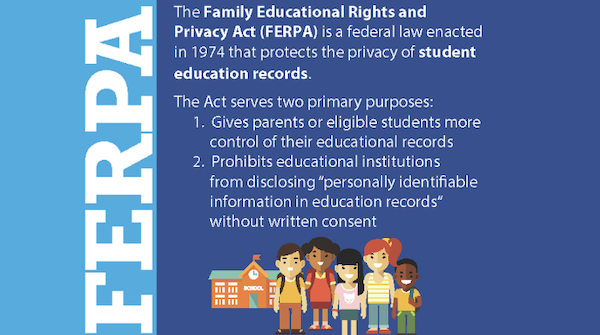A MiddleWeb Blog

 My middle school students are “English Language Learners,” but in the end, that designation doesn’t tell you much.
My middle school students are “English Language Learners,” but in the end, that designation doesn’t tell you much.
It doesn’t tell you that many of them speak English very well, or that they were actually born here, or they’ve been in the US for so long that they are culturally American.
It doesn’t tell you that their parents’ jobs are the foundation for whole industries, such as the dairies, fields, and vineyards that make up 40% of the land in my county. And it doesn’t tell you that they are scared.
Think of something deeply personal that directly impacted you this morning as a teacher. Maybe your son or daughter has long Covid. Maybe you’re moving your mom into an assisted living facility. This is how immediate and intense our current immigration policy feels to our ELL students.
Their aunts are talking with lawyers about making sure their paperwork is in line. Their friends are coming to school with rumors about border control officers showing up at the daycare down the street. Their parents are there in the morning when they leave for school, and two hours later disappear into an ICE vehicle.
If you’re like me, you’ve been struggling with how to meet this moment. So if you teach students from immigrant families in any capacity, I hope this quickly assembled list of “what can I do?” actions is helpful to you. Everything I write below this sentence has been tested in real time.
1. Understand current federal law impacting students of immigrant families.
Much of my information here is cited directly from the work of Greg Cunningham, an immigration lawyer whose book I recommend. There are three “buckets” of current federal legislation that you need to know and monitor.
✦ Supreme Court Case Plyer Vs. Doe, 1982. In practice, the Supreme Court decision in Plyler v Doe means that schools cannot deny enrollment to undocumented children or implement enrollment practices that can have a “chilling” effect on undocumented student enrollment. Schools also cannot request documents that could reveal a students’, or their parents’ or guardians’, immigration status, such as permanent resident (green) cards, social security cards, or work authorizations. This court case is being actively challenged.
✦ The Federal Education Rights And Privacy Act, 1974. Under FERPA, institutions are prohibited from disclosing personally identifiable information (PII) found in education records without the student’s written consent except under certain conditions. These protections extend to undocumented students, as well. The elimination of the Department of Education, or any one of a number of recent Executive Orders involving immigrants, could be used in the future to co-opt FERPA and pressure schools to determine or disclose the immigration status of students or their families.
✦ Current Executive Orders and Actions. There are nearly 17 of these in existence now that may be used to directly impact immigrant families. Amongst other things, they allow minors who commit juvenile delinquency to be deported, aim to end birthright citizenship, and end Temporary Protected Status for immigrants from a number of countries (El Salvador, Haiti, Venezuela, Ukraine, Honduras, and Nicaragua among them). A summary can be located here. For current news, also see this site.
2. Get clear answers on how your district is concretely supporting students from immigrant families.
The federal education laws for the students of immigrant families are the same across the country, but a district’s leadership at this critical moment is going to be different from place to place, superintendent to superintendent, and principal to principal. You need to find out where your leadership is.
Some districts, like this one, are willing to be upfront about defining their schools as “safe spaces” for immigrant students. Others are navigating in a greyer area. They may be located in Republican-heavy districts, or concerned about the repercussions of their actions on the wider nets of support they have in place for students, and are finding unpublicized ways to support immigrant families. Your job is to ask questions and advocate for candid answers coordinated amongst all involved staff, even if those answers are off the record. Some suggestions:
✦ Is there a clearly documented policy about how to handle law enforcement if they show up on campus? Are all employees, especially office staff, trained and aware of the policy?
✦ What has the district communicated to the general public about their response to current federal immigration policy? How has this information been distributed?
✦ What and how has the district communicated specifically to immigrant families about their response to current federal immigration policy? Are any Know Your Rights workshops planned for families?
✦ Has there been any cross-level coordination about the situation: administration, educators, counseling staff, and office staff? Should there be?
✦ What legal guidelines has the district been given about this situation?
✦ What are the stances of other local districts? The state education department?
3. Ensure your immigrant families have updated school records.
No matter what the answers are to #2 (or what your opinion is about them), every family – immigrant or not – has certain rights under federal education law. By “updated school records” I mean two things specifically: family emergency contacts and the family’s decision to opt in or opt out of school directory information under FERPA.
I had to remind myself what “directory information” was, so here’s the link to the actual definition. Every family has the right to restrict the distribution of this information to a third party. Make sure your immigrant families know this, and get a clear indication from family members of whether that’s something they’d like to do. Here’s an example of an opt-out form.
Similarly, ask your immigrant families to confirm and/or update their emergency contact information. Should anything happen to your students’ parents or guardians, the school will be able to get in touch quickly with the families’ designated representatives in case of an emergency.

 4. Check your moral compass.
4. Check your moral compass.
I’m now going to say something controversial: As a teacher, your personal political stance on immigration is irrelevant.
Whether you think undocumented immigrants are gaming the system, or innocent victims of gross injustice, it doesn’t matter. Whether you think schools should teach only the children of citizens, or not, it doesn’t matter. What you think politically doesn’t matter when it comes to the duty of care for our students from immigrant families, and it never has. They are our kids. They are in our classrooms at this moment. They might be experiencing profound trauma.
As a teacher, how you show up for our immigrant students and families will change depending on your students’ needs, your district’s allocation of resources, and your political environment.
But that you have to show up for them? For teachers, that’s non-negotiable.










